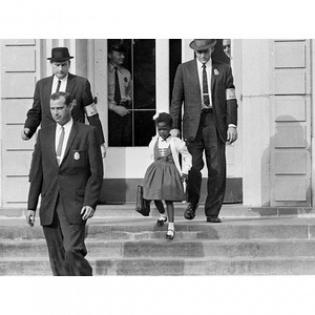Power in Numbers
From history we know that working in community (not on our own) is the best way to make change. Young people explore the work of nonprofits related to equity and social justice.
The learners will:
- identify nonprofit organizations working for social justice.
- printed copies of the Flying Geese handout
- Guidestar http://www.guidestar.com
- NAACP http://www.naacp.org
- Southern Christian Leadership Conference https://nationalsclc.org/
Instructions
Anticipatory Set:
Ask young people to give reasons for why humans organize around issues to make change. As examples, raise awarenss of the efforts of the United Nations in the Sustainable Development Goals, the students of Stoneman Douglas High School who spoke for gun control, and The Civil Rights Movement.
Note: In the next lesson, young people will have a chance to organize an effort called “Mix it Up” day. In this project, young people build community by deliberately sitting at lunch by someone they don't know or wouldn't usually talk to. Let themknow that they will be responsible for all levels of organization of the event. In this effort, everyone’s opinions will be valued and encouraged. Success is dependent on everyone’s time, talents or treasures going toward making the “Mix It Up” day event a successful experience.
Review Lesson One: The Power of Protest. There were many unorganized protests before the bus boycott, but they failed to result in major policy change. Today, a protest is supported by nonprofit organizations like the NAACP, which gives individuals strength and the collective knowledge and power of an organized effort. Nonprofit organizations are formed to take action for the common good. Some nonprofits have the purpose of seeking justice. That is their mission.
Distribute copies of Flying Geese (handout below) to read and discuss. The NAACP (National Association for the Advancement of Colored People) played a critical role in the success of the bus boycott, and the SCLC (Southern Christian Leadership Conference) formed as a result of the bus boycott.
Ask youth to identify the mission statements of the NAACP and the SCLC. Like a business, a non-profit is an organization that serves society. The main difference is that businesses have the purpose of making money, and nonprofits get their purpose from a mission.
Working in pairs, young people look up nonprofit efforts for social justice or diversity, equity, and inclusion (DEI). They can do a search for social justice missions on the Guidestar website www.guidestar.com. They make a list of nonprofits and their social justice missions. In their working pairs, they write a statement about the importance of the collective work nonprofits are doing for social justice and equity, and why this collective work is more effective than individuals working alone. They add a sentence describing what they can do to add their own voice and support to the work.
The pairs of youth share their statement with the whole group and discuss.
Handouts
Philanthropy Framework
-
Strand PHIL.I Definitions of Philanthropy
-
Standard DP 03. Names and Types of Organizations within the Civil Society Sector
-
Benchmark HS.1 Recognize and use a variety of terms related to the civil society sector appropriately, and identify the characteristics the terms describe.
-
-
Standard DP 04. Operational Characteristics of Nonprofit Organizations
-
Benchmark HS.3 Describe and compare the characteristics, legal roles and responsibilities of civil society sector boards and how civil society organizations operate.
-
-
-
Strand PHIL.II Philanthropy and Civil Society
-
Standard PCS 01. Self, citizenship, and society
-
Benchmark HS.3 Give examples of human interdependence and explain why group formation is one strategy for survival.
-
Benchmark HS.6 Describe nonprofit advocacy organizations and their relationship to first amendment rights.
-
-
